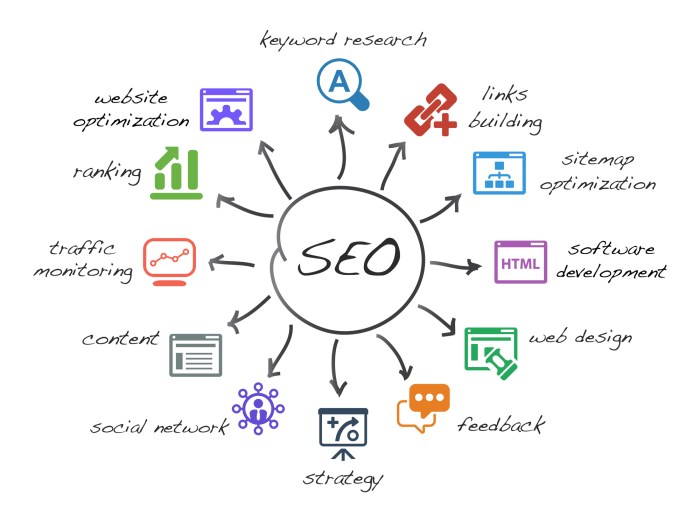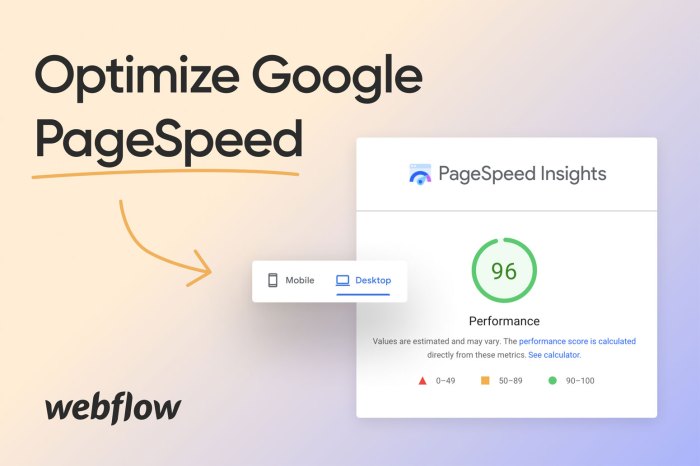Optimizing Website Speed takes center stage in the digital realm, where lightning-fast loading times reign supreme. Dive into the world of web performance optimization with a mix of tech-savvy tips and tricks.
Importance of Website Speed Optimization

When it comes to website speed, ain’t nobody got time to wait around, you feel me? Optimizing your website speed ain’t just about making it load faster for the sake of it – it’s all about giving your users the best experience possible. Think about it, nobody wants to sit there twiddling their thumbs while your page takes forever to load, right?
Impact on User Experience
Let me break it down for you – when your website loads lightning fast, users are happy campers. They can easily navigate through your site, find what they need, and bounce around like nobody’s business. But when your site is slower than a snail on a hot summer day, users get frustrated, bounce off quicker than you can say “loading,” and probably never come back. Ain’t nobody got time for that, right?
Rankings, Optimizing Website Speed
Listen up – Google ain’t playing around when it comes to website speed. The big G loves a fast-loading site and rewards those who optimize for speed with higher rankings. That’s right, faster loading times can give your a serious boost and help you climb up them search engine result pages faster than you can say ” magic.”
Conversion Rates
Now, let’s talk business – faster loading times can lead to higher conversion rates. When your site loads quickly, users are more likely to stick around, browse your products or services, and hit that “buy now” button without a second thought. It’s all about making that first impression count and turning those casual visitors into loyal customers. Speed matters, my friend – don’t sleep on it.
Factors Affecting Website Speed

When it comes to website speed, there are several factors that can impact how quickly a webpage loads for users. These factors can range from server performance to the size of images used on the site.
Server Performance
Server performance plays a critical role in determining the speed at which a website loads. A slow server response time can significantly delay the loading of web pages, leading to a poor user experience. It is essential for websites to be hosted on reliable servers with fast response times to ensure optimal speed for visitors.
Image Optimization
Image optimization is another key factor that can affect website speed. Large, high-resolution images can slow down load times significantly. By optimizing images through compression and resizing, website owners can reduce the file sizes of images without compromising quality. This, in turn, can lead to faster loading times and improved overall performance.
Best Practices for Optimizing Website Speed
When it comes to optimizing website speed, there are several best practices that can make a big difference in how fast your site loads. By following these tips, you can ensure that your website is running at its optimal speed, providing a better user experience and potentially improving your search engine rankings.
Minimizing HTTP Requests
One of the most effective ways to speed up your website is by minimizing the number of HTTP requests it makes. Each element on your webpage, whether it’s an image, a script, or a stylesheet, requires a separate HTTP request. By reducing the number of these requests, you can significantly improve your site’s load time. Combine multiple files into one where possible, and optimize images to reduce their file size.
Importance of Using Browser Caching
Browser caching allows your website to store certain files on a visitor’s device so that they don’t have to be reloaded every time the visitor returns to your site. This can greatly improve load times for returning visitors, as their browser can quickly access the cached files instead of downloading them again. Make sure to set appropriate caching headers for your files to ensure they are cached effectively.
Minifying CSS and JavaScript Files
Minifying CSS and JavaScript files involves removing unnecessary characters, such as white spaces and comments, from these files to reduce their size. Smaller files can be loaded more quickly by the browser, leading to faster load times for your website. There are various tools available that can help you minify your files automatically, making this process relatively easy to implement.
Tools for Measuring Website Speed: Optimizing Website Speed
When it comes to checking how fast your website loads, there are several tools available to help you out. These tools can provide valuable insights into your website’s performance and help you identify areas for improvement.
Google PageSpeed Insights
Google PageSpeed Insights is a popular tool that analyzes the content of a web page and generates suggestions to make that page faster. It provides a score based on various performance metrics and offers recommendations on how to improve load times. By following these suggestions, you can optimize your website for better speed and user experience.
- Google PageSpeed Insights evaluates important metrics such as Time to First Byte (TTFB) and First Contentful Paint (FCP).
-
TTFB
measures the time taken for the browser to receive the first byte of data from the server. A lower TTFB indicates faster server response times, leading to quicker loading speeds.
-
FCP
represents the time it takes for the first meaningful content to be displayed on the screen. A faster FCP helps in creating a better user experience, as visitors can see content sooner.